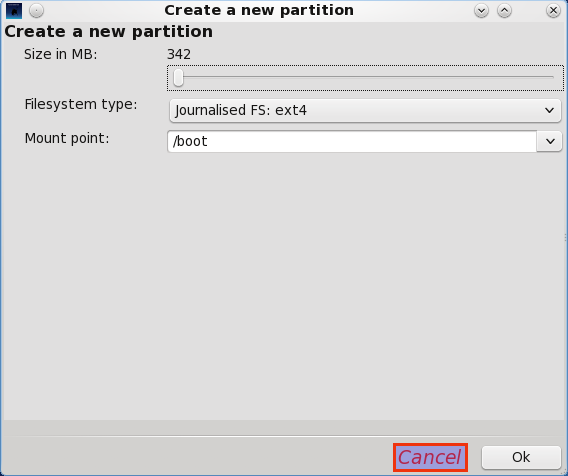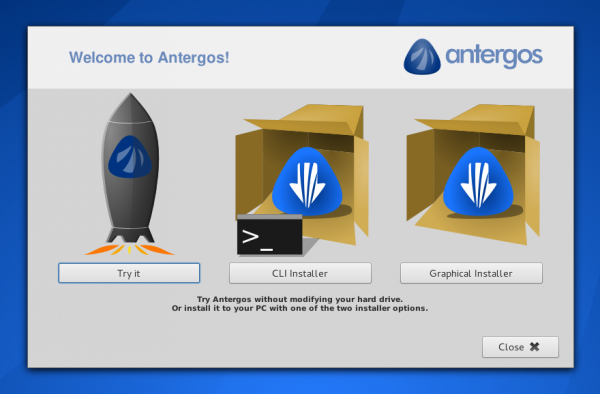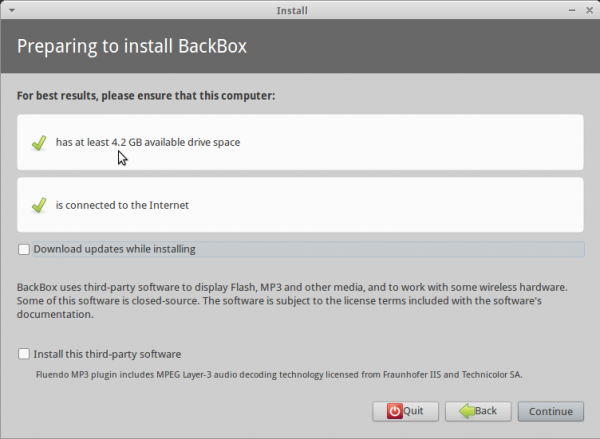 PCLinuxOS is a APT-ified, Mandriva-based Linux distribution. It’s one of those distributions that offer a separate version for virtually every existing desktop environment. Four of them – Enlightenment, LXDE, Openbox and Xfce are recommended for intermediate to advanced users, while the GNOME and KDE versions are recommended for all user levels (beginner to advanced).
PCLinuxOS is a APT-ified, Mandriva-based Linux distribution. It’s one of those distributions that offer a separate version for virtually every existing desktop environment. Four of them – Enlightenment, LXDE, Openbox and Xfce are recommended for intermediate to advanced users, while the GNOME and KDE versions are recommended for all user levels (beginner to advanced).
If you make a detailed study of all six versions of this distribution, you are going to question the user-level tagging. But that is the subject of another post. For now, let’s review the KDE version, which was last updated on July 5, 2010.
As with any distribution review, it’s best to start with the installation program.
Installation – The KDE image used for this review is a live CD image. The available boot options are shown in the image below. You get a lot of boot options. While I do not argue with the purpose of a live environment, some people might want to install the distro without first booting into the live environment. It would be a good idea to give those group of users two more options (shown in red in the image).

Default boot options plus a couple of suggestions
In contrast, take a look at the boot options of Mandriva One 2010. It is also a live CD, but it offers an option for users who might not want to boot into the live environment, and another option for users who might change their minds about booting or installing from the CD. Most live CD/DVD distributions have these options. It would be a good idea to see them on the next release of PCLinuxOS.

Simple boot options of Mandriva One 2010
Of the major Linux distributions with a live image, PCLinuxOS is, as far as I can recall, the only one that requires a password to install. It’s a requirement that does not make sense to me. It’s not as if the password is hidden or a secret. It’s right there in the middle of the top section of the desktop. I cannot think of a good reason, security or otherwise, why a password is needed to either log into or install a distro from the live environment.
The lack of a Back button at critical steps during the installer process is one very annoying thing, especially if you make a mistake in a previous step. Your only option then is to hit the Cancel button, which means restarting the installation process. All the installers that I have used, even the simplest ones like Ubuntu’s and Mint’s, have a Back button at every step.

Adding a Back button would also be nice
Here’s another instance where an extra button would not hurt. This time, however, it’s not a Back button, but a Cancel button. Imagine for a moment that you are trying to create a partition as shown in the image below. Midway into the operation, you decide against creating the partition. With the installer, you cannot cancel the operation. You will have to complete it, that is, create the partition, then delete it in the main window. Sure, you could click on the window’s close button in the upper right side, but a Cancel button is more professional and expected.

A Cancel button on the partition creation window would be nice, too.
Yet another annoying aspect of the installer is it’s questionable support for LVM. If you didn’t know any better, you’d think that LVM is officially supported, but you’d be wrong. Trying to configure LVM will eventually get you to the step where the message shown in the image below graces your screen. Clicking Ok to install it will keep you waiting from now ’til thy kingdom come. Some people have reportedly succeeded in configuring LVM on PCLinuxOS, but it’s a crap-shoot. Interestingly, the lvm2 package is in the repository, but why is it not packaged with the installer?

Without the LVM2 package, how can you configure LVM?
That’s the end of stuff I do not like about the installer. Actually, there are a few more, but I think these will do for now. What follows is a long list of stuff I also do not like after installation.








I don’t use PCLINUXOS but I would like to say that the printer option it uses is a very good idea and other distros should follow in their footsteps. The following is reason/s why: If one is dual booting with Windows and does not need linux for printing or has a printer that does not have linux drivers (of which there are many, especially the budget variety), it can be very annoying to have the printer setup wizard pop-up at every boot time and the only way to stop this is to completely uninstall all printer related packages or unplug the printer when using linux (which becomes an unnecessary chore because you would need to plug it back in when using Windows or when you have multiple users using the same PC and some of those, for various reasons, don’t use Linux).
Of the reviewer’s other observations, I am in full agreement with default firewall enabling as I am a MBB user (and this is a growing segment of Linux users, especially with the popularity of netbooks) and there is generally no hardware router firewall to rely on with Mobile Broadband USB modems. I also support the installer recommendations, especially to boot directly into an install environment without using live-cd install mode and the higher RAM resources that it requires (openSUSE does this very well and can be installed on older hardware with limited RAM, which would preclude or make very difficult installing from live-cd mode).
Your site, your rules, your opinion.
Unfortunately you don’t have your info right I must ask three things:
1. Don’t you think all the decisions have a reason?
2. Did you tried to know that reason? because many were based in the community opinion (maybe that’s why the community is writing here, not because there are many fan boys)
3. Do you like the method of rock throwing to get hits on your page? an old trick, you know 😉 it seems so
Have a Good Day
Well, how do I start?
As already pointed out, PCLinuxOS is no longer based on Mandriva.
Mepis, Knoppix and several others have the user name and password out in the open but require you to type them in. I will agree with you that it seems redundant to type in the root password once you decide you want to install it.
I also think it would be GREAT to have the BACK and CANCEL buttons added in the installer.
I agree on your comments on LVM. If it is an option in the installer, then include the LVM package.
I think you blew it on the firewall. Just about all distros include a firewall but it is disabled by default. I don’t believe in the “one firewall configuration fits all” theory. My needs are different from yours. Include a firewall, place an icon somewhere easy to spot and let us do the rest.
I definitely disagree on the Update Notifier. I hate that thing. I hate it in Windows and i hate it in Linux. PCLinuxOS is a rolling distro so there are updates everyday. It was just plain annoying to see that down there. I am glad the Devs listened to the community and removed it.
Printerdrake – I really don’t understand your point there. You complain about the first line asking the user to ensure the printer is connected and online. All beginner friendly distros should have that line. It is a common mistake. In the Windows world, many printers are NOT to be connected until the installer requests it. This takes the question out for the newbie of connect or not connect the printer first.
The second box in Printerdrake warns you of a potential security risk. Early you made the comment that the distro was less than secured because it did not have the Firewall install. Now the distro is warning you of a potential risk and you still complain.
Screen resolution – I never had that problem but have had a problem where my display was off to the side because of an incorrect flat panel configuration.
The screensaver is not on by default because the community requested it not be on.
At this point you concluded that PCLinuxOS is not a modern distro because the Devs require the users to manually configure everything.
Actually, the PCLinuxOS Devs implemented the users wishes and didn’t try to make a one configuration fits all distro. They didn’t force a taskbar on top and say live with it. They listened to us and implement many of our wishes.
Does this mean you were bashing as many suggest? I don’t think so. You comment on what you saw based on the distros you know. PCLinuxOS and Ubuntu, Mandriva, Mint and others are different.
If you want a ROLLING distro that is fast and has Devs that actually listen and implent your suggestions, then have a look at PCLinuxOS.
If you want a Windows like distro with everything generally preconfigured, then maybe Ubuntu or Mandriva is for you.
I left out Mint because it is an AWESOME distro. If it ever gets based on Debian testing, it will give PCLinuxOS a run for its money to take over my PC’s.
All in all, not a terrible review, but you should have done a bit more homework. What would have been nice would have been if you had sent the review to the Devs first. Then post your review with THEIR comments in there.
That would have been so different!
I actually find this review to be an honest look at PCLOS’s issues, and he is dead on accurate, although he seemed to be holding back because PCLOS definitely has many more glaring issues. The fact is that every distro has issues, including Ubuntu, Mandriva, Fedora, and SuSe, but the primary difference between PCLOS and all the rest is that the PCLOS devs dont really seem to focus on fixing the bugs that plague it. The PCLOS community is generally xenophobic and hostile to outside criticism, which behavior tends to rot the core of the Distro itself over time. Take the review for what its worth, but ignore it at your peril.
Well that was a rather harsh review, not entirely unfair mind you, but overly harsh. I did hate the installer a little when I put it on my machine, but after that it’s been great. I may have preferred the firewall be enabled by default, but the distro I came from before didn’t do that either and I had more boot loader configuration issues with it. And after a hell of a lot of upgrade and reinstall problems with Mint I love the PCLOS rolling release model. Oh and FYI Frank the thing definitely boots faster than Vista.
I am an older PCLinuxOS user. I only learned about Linux five years ago, so I still consider myself a beginner. However, at this point I have installed several versions of Linux (including Ubuntu) AND Windows (XP and 7). Installing any version of Windows scares me! Installing Linux, and particularly PCLinuxOS, is so much easier! I have found PCLinuxOS to be the MOST STABLE, user-friendly OS I ever used.
I think some of your facts are incorrect. Most everyone I know would rather boot up a live cd to check their hardware FIRST, rather than just hitting install. Having some things disabled so the user can decide their own preferences is a good idea.
I see that you said you summarized the things YOU think need fixing. Linux is about choice, right? Thanks for your opinion, but I don’t agree.
About time someone dared write something critical (with points to back it up) of PCLinuxOS. I was a fan and user of it a few years ago, but I have dropped it since, finding it to be out of date and buggy compared to Ubuntu, Linux Mint, etc. Other distros have now far surpassed PCLOS with ease-of-use and look and feel. Fonts are better in the other distributions I have mentioned. More polished. Just look at the screenshots in this review.
Sorry to offend the PCLOS community, but this distro has passed its prime and needs some serious work in order to compete. I, for one, with the PCLOS community would admit to its shortcomings and fix them.
But with the attitude that the fan-boys on this thread shows, that will never happen. Obviously there is nothing that PCLOS needs to fix–it must be perfect already.
Well I do not know much about Linux, but I can only say , Thanks Tex , PCLOS IS FANTASTIC!!! .
Opsss!! I only use E17 in PCLinuxOS, but still good more fantastic.
Greetings:
Agust
When the opening statement of a review is incorrect, why should anyone bother reading the rest?
PCLinuxOS uses apt4rpm.
PCLinuxOS is independently developed – by members of the PCLinuxOS community.
Check the facts before publishing. I dare you.
PCLOS was originally built off Mandriva. The fact that they have changed and patched it so much that it isn’t exactly mandriva anymore doesn’t really make the statement false. It wasn’t built from scratch, it was built from mandriva, and modified over time, thats where the original packages came from, they’ve just been patched over time.
For goodness sake, do you lot need to whinge and nitpick every little thing, instead of pay attention to the things being pointed out? I’ve seen these same things complained about by various people’s I’ve shown PCLOS to, it’s stuff that needs looking at and fixing, not just complaining because someone has dared point out the short-coming s of the distro. It was once great, now it’s ok. It can be better. Listening to constructive criticism, and not acting like trolls, would be a good start.
i love pclinux cos pclos devs care better about desktop users. They ensure a great combo of boot, system responsiveness, well tested packages, and rolling-release model. And i m sure, they are very good at it. Anybody should use pclinux 2010 alongside his/her fav distro for at least some months and then conclude which is better. Couple of hours use to draw a decision is just madness. As for me pclos is the only distro that really cares for desktop users.
It’s inevitable that PCLinuxOS is compared with Mandriva, which boils down the question to: which is better in terms of ease of installation, speed, stability, hardware support and aesthetics?
I think the reviewer wasn’t nitpicking. He was only trying to show the little “niggles” that could be a major irritant if taken altogether.
I myself would rather go for Mandriva 2010 Spring or the latest “Ice” reiteration of PeppermintOS. Both have proved their worth as far as my expectations are concerned.
You really should check your facts before writing. You said, “PCLinuxOS is a APT-ified, Mandriva-based Linux distribution.”
That is not correct. PCLinuxOS uses Apt4RPM. It is not based on any other distro. It is developed by members of the PCLinuxOS community. Yes, it did start out Mandriva based, but that not the case now.
Even a basher should get such facts right!
Wow! I am amazed how all of the previous comments just dissappeared. This is distro bashing, not a review. This so called review is nothing more than a load of crap.
Just because you don’t like what is said does not mean he is “bashing” your fave toy. Try being logical instead of emotional.
It’s actually fantastic news that the screensaver is NOT enabled by default! Hurray PCLinuxOS! Have any of you watched video on your KDE pc only to be interrupted by that screensaver? It took so much trial and error in OpenSuse 11.3 for me to finally turn off that bloody screensaver and yet I was not even sure I truly succeeded.
My suggestions for PCLinux would be to improve the look of the desktop as it’s so oldies really. The disto deserves a much better theme and icon set. Replace SMPlayer default with VLC. Why? SMPlayer had the bad habit of closing the video screen randomly and playing only audio when watching movies.
And lastly please make it play nice on dual boot with Ubuntu. In my default dual boot installation, Ubuntu first, PCLinuxOS installed fine next but returned a boatload of errors when chosen in the grub menu. In contrast, OpenSuse and Ubuntu lived along nicely in a dual boot system.
Ubuntu uses grub2 while PCLinuxOS uses grub This is not caused by PCLOS. If you check their forum there is a thread about making the two work in harmony
The PCLOS fan boys here are giving it a bad name.
Not all reviews have to be glowing. I for one WANT to know all the little niggles about a distro because that’s what tells me how good the developers are. It’s those little niggles that tick off the first time users, too.
Yes, a firewall should be turned on by default, with a default configuration of stateful inspection. I know a lot of distros don’t, but they should. And no, not everyone runs a hardware firewall, especially normal users. And router firewalls can be compromised if the user doesn’t configure the default user id and password – which I can tell you most users don’t.
Linux advocates need to drop the attitude that if you can’t configure a firewall or do command line stuff you don’t “deserve” to run Linux. A case can easily be made that ALL end users of computers should know more than they do – but they don’t. It’s not going to happen. Get over it. Design the system to deal with that fact.
I dumped Kubuntu several years ago because of poor QA and niggles that irritated the crap out of me. I switched to openSUSE which has been totally stable (except for Gwenview being able to knock down KWin frequently), reliable and full of system configuration tools.
I’ve heard that PCLinuxOS was a “polished” version of Mandriva (which I used prior to Kubuntu for a year or so), but this article suggests it’s becoming harder to be so polished, as many distros are becoming due to the increasing complexity of Linux. Distros need to redouble their QA and their design work so ridiculous issues that failing to have a back or cancel button on the installer do not occur.
A few years ago a Kubuntu version had a bug that meant you couldn’t get out of the installer change partition screen AT ALL. What did this mean? It meant that the entire installation process had NEVER been tested! It was obvious. This is unacceptably bad. So I do want to see what the niggles are in the installer because it reflects on the quality of the entire distro.
The firewall was originally turned on, but the majority of users complained about it so the developers turned it off. Personally this should be left to each and every user to decide if they want it or not. The configuration of the firewall is simplistic and does not require user ID or passwords. Perhaps check it out before complaining about it would help.
I really do not believe that PCLOS is hard to use, even my 83 year old mother has set hers up without my help. How much easier can it really get. Yes some things could be a bit clearer, but overall it is easy to use.
“The firewall was originally turned on, but the majority of users complained about it so the developers turned it off.”
Questions: Why did the users complain about it, and why did the developers agree to turn it off? I really want somebody to give us a good reason why the community thought that having the firewall on by default was a nuisance.
“The PCLOS fan boys here are giving it a bad name.”
I disagree. Where does it say somebody can post crap like this calling it a review and we PCLinuxOS users don’t have a right to respond?
Who said they can’t respond? Foaming at the mouth and abusing the reviewer tho is hardly a mature response.